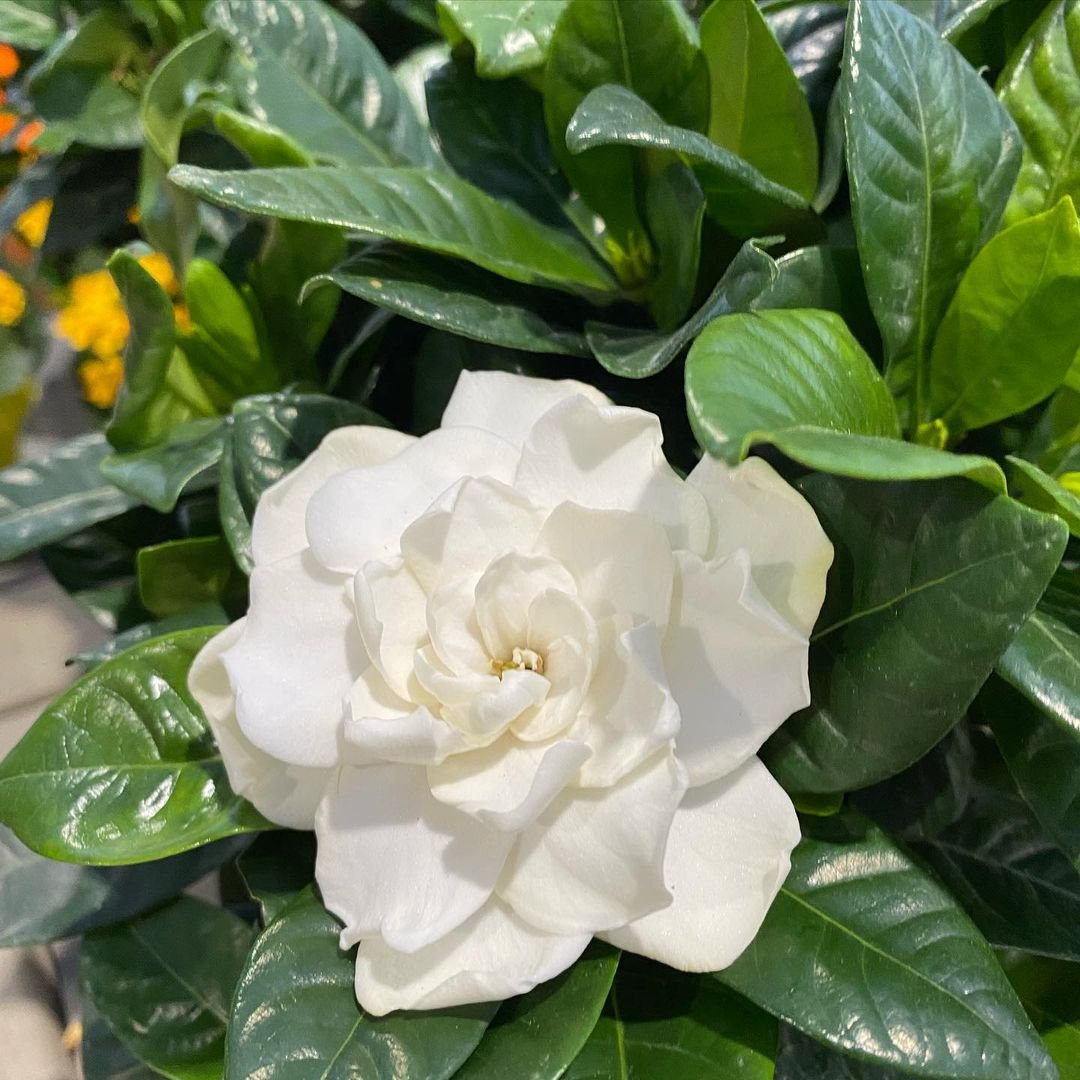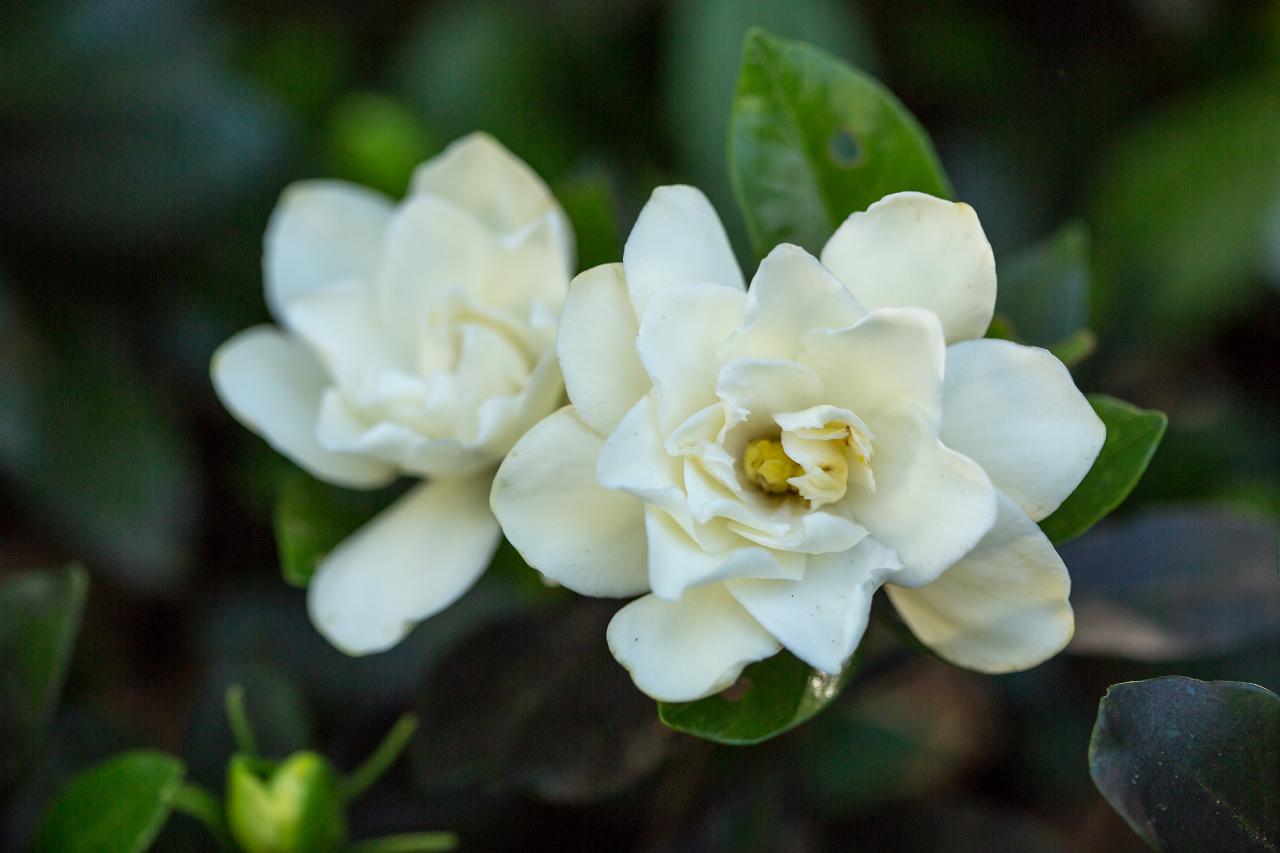The Enigmatic Elegance of Gardenia: A Deep Dive into its Beauty, Care, and Lore

The gardenia, with its intoxicating fragrance and pristine white blooms, is a horticultural icon. Often associated with romance, purity, and elegance, this captivating flower has graced gardens and homes for centuries, captivating hearts with its exquisite beauty. But beyond its visual appeal lies a complex and sometimes demanding plant that requires careful attention to thrive. This article delves into the world of gardenias, exploring their history, varieties, cultivation, common problems, and the enduring allure that makes them a cherished addition to any garden or indoor space.
A Journey Through History and Origins:
The name "gardenia" honors Dr. Alexander Garden, a Scottish-American physician and botanist (1730-1791) who corresponded with Carl Linnaeus, the father of modern taxonomy. While Dr. Garden didn’t discover the plant, he was a keen enthusiast of botany, and Linnaeus chose to commemorate him in this way.
However, the gardenia’s story extends far beyond its naming. Native to the tropical and subtropical regions of Asia, particularly China and Japan, the gardenia has been cultivated for centuries, its fragrant blossoms prized for their beauty and use in traditional medicine and perfumes. In Chinese culture, the gardenia, known as zhi zi, symbolizes refinement, elegance, and quiet strength. Its fruit is used in traditional Chinese medicine for its purported anti-inflammatory and cooling properties.
The gardenia made its way to Europe in the 18th century, quickly becoming a favorite among wealthy landowners and plant collectors. Its exotic appeal and potent fragrance made it a symbol of luxury and sophistication. The plant’s popularity soared in the 19th and 20th centuries, solidifying its place as a classic ornamental plant.
Varieties of Gardenia: A Spectrum of Beauty:
While the Gardenia jasminoides is the most common species, the gardenia family encompasses a diverse range of cultivars, each with its unique characteristics:
- ‘August Beauty’: A popular and reliable variety known for its large, double blooms and extended flowering season. It is relatively hardy and tolerant of varying conditions.
- ‘Veitchii’: One of the oldest and most fragrant varieties, ‘Veitchii’ produces an abundance of double, snow-white flowers. It is relatively compact and well-suited for containers.
- ‘Radicans’: A dwarf, creeping variety that makes an excellent ground cover or container plant. It produces small, single flowers.
- ‘Kleim’s Hardy’: As the name suggests, this variety is more cold-hardy than other gardenias, making it suitable for gardens in cooler climates. It features single, fragrant flowers.
- ‘Golden Magic’: A unique variety that boasts blooms that start white and gradually turn golden yellow as they mature.
- ‘Belmont’: A large-flowered variety with strong stems, making it suitable for cut flowers.


Choosing the right variety for your specific climate and growing conditions is crucial for successful gardenia cultivation.
Cultivating Gardenia: A Balancing Act:
Gardenias are notoriously finicky plants, requiring a delicate balance of factors to thrive. Here’s a comprehensive guide to successful gardenia cultivation:
- Light: Gardenias thrive in bright, indirect light. Direct sunlight can scorch their leaves, while insufficient light can inhibit flowering. A spot near an east-facing window is ideal for indoor gardenias. Outdoor gardenias prefer dappled shade or morning sun and afternoon shade.
- Soil: Acidic soil is essential for gardenia health. The ideal pH range is between 5.0 and 6.0. Use a potting mix specifically formulated for acid-loving plants, such as azaleas and camellias. Adding peat moss or sulfur to the soil can help lower the pH.
- Watering: Consistent moisture is crucial, but overwatering can be fatal. Water deeply when the top inch of soil feels dry to the touch. Avoid allowing the plant to sit in standing water. Using rainwater or distilled water is preferable, as tap water often contains minerals that can raise the soil pH.
- Humidity: Gardenias crave high humidity. Indoor plants benefit from regular misting, a pebble tray filled with water, or a humidifier. Grouping plants together can also help increase humidity.
- Temperature: Gardenias prefer temperatures between 65°F and 70°F (18°C to 21°C) during the day and slightly cooler temperatures at night. Avoid exposing them to drafts or sudden temperature fluctuations.
- Fertilizing: Feed gardenias regularly during the growing season (spring and summer) with an acid-loving fertilizer. Follow the instructions on the fertilizer package carefully. Avoid over-fertilizing, as this can damage the plant.
- Pruning: Prune gardenias after they finish flowering to encourage bushier growth and more blooms the following year. Remove any dead, damaged, or crossing branches.
- Repotting: Repot indoor gardenias every two to three years, or when they become root-bound. Choose a pot that is slightly larger than the previous one and use fresh acidic potting mix.

Common Problems and Solutions:
Despite their beauty, gardenias are susceptible to several problems:
- Yellowing Leaves: Yellowing leaves can be caused by a variety of factors, including overwatering, underwatering, nutrient deficiencies (particularly iron), and alkaline soil. Test the soil pH and adjust it if necessary. Ensure proper watering practices and fertilize with an acid-loving fertilizer.
- Bud Drop: Bud drop, the premature shedding of flower buds, is a common frustration for gardenia growers. It can be caused by temperature fluctuations, low humidity, insufficient light, overwatering, underwatering, or stress. Address any of these potential issues to prevent further bud drop.
- Pests: Gardenias are susceptible to pests such as aphids, mealybugs, scale, and spider mites. Inspect your plants regularly for signs of infestation. Treat infestations with insecticidal soap, horticultural oil, or neem oil.
- Sooty Mold: Sooty mold is a black, powdery substance that grows on honeydew, a sticky substance excreted by aphids, mealybugs, and other sap-sucking insects. Control the pest infestation to eliminate the source of the honeydew and the sooty mold will eventually disappear.
The Enduring Allure of Gardenia:
Beyond its aesthetic appeal and intoxicating fragrance, the gardenia holds a special place in our hearts for its symbolic meaning. It represents purity, love, refinement, and joy. It is often used in wedding bouquets and corsages to symbolize love and devotion.
The gardenia’s fragrance is also highly valued in the perfume industry. Its sweet, creamy scent is a key ingredient in many popular perfumes and fragrances. The essential oil extracted from gardenia flowers is believed to have calming and relaxing properties.
Whether you’re a seasoned gardener or a novice plant enthusiast, the gardenia offers a rewarding challenge. With careful attention to its specific needs, you can enjoy the beauty and fragrance of this enchanting flower for years to come. Its demanding nature only adds to its allure, making the successful cultivation of a gardenia a testament to your dedication and skill. The reward is a stunning display of pristine blooms and a fragrance that fills the air with elegance and grace.
FAQ: Your Gardenia Questions Answered
- Why are my gardenia leaves turning yellow? Yellowing leaves can indicate several issues, including improper watering, nutrient deficiencies, or incorrect soil pH. Check your watering habits, test the soil pH, and fertilize with an acid-loving fertilizer.
- Why are my gardenia buds falling off? Bud drop is often caused by stress, such as temperature fluctuations, low humidity, or inconsistent watering. Ensure stable temperatures, increase humidity, and maintain consistent moisture levels.
- How often should I water my gardenia? Water deeply when the top inch of soil feels dry to the touch. Avoid overwatering, which can lead to root rot.
- What kind of soil does a gardenia need? Gardenias require acidic soil with a pH between 5.0 and 6.0. Use a potting mix specifically formulated for acid-loving plants.
- How much light does a gardenia need? Gardenias thrive in bright, indirect light. Avoid direct sunlight, which can scorch their leaves.
- Can I grow gardenias indoors? Yes, gardenias can be grown indoors, but they require specific conditions, including bright light, high humidity, and acidic soil.
- How do I increase humidity for my indoor gardenia? You can increase humidity by misting the plant regularly, placing it on a pebble tray filled with water, or using a humidifier.
- When should I prune my gardenia? Prune gardenias after they finish flowering to encourage bushier growth and more blooms the following year.
- What pests attack gardenias? Gardenias are susceptible to aphids, mealybugs, scale, and spider mites. Inspect your plants regularly for signs of infestation and treat accordingly.
- Is gardenia fragrant? Yes, gardenias are known for their intensely fragrant blooms, which are highly valued in the perfume industry.
Conclusion:
The gardenia, with its pristine white blooms and intoxicating fragrance, remains a symbol of elegance, beauty, and enduring charm. While its cultivation can be challenging, the rewards are well worth the effort. By understanding its specific needs and providing the right growing conditions, you can enjoy the captivating beauty of this iconic flower for years to come. Whether gracing a garden or adorning an indoor space, the gardenia continues to enchant and inspire, reminding us of the simple yet profound beauty found in the natural world. Its delicate blooms serve as a testament to the power of nature to uplift our spirits and bring joy to our lives. Embrace the challenge, and you’ll be rewarded with the fragrant and breathtaking beauty of the gardenia.
